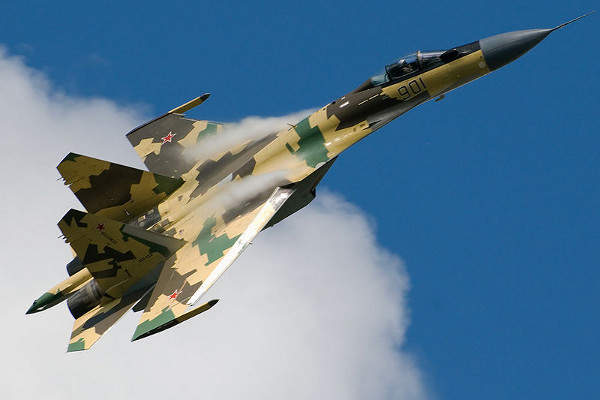
According to reports from Tansim News Agency, Iran’s Deputy Defense Minister Brigadier General Mahdi Farahi said that the deal with Russia to for the delivery to Iran of Russian-made Sukhoi Su-35 fighter jets, Mil Mi-28 attack helicopters, and Yak-130 jet trainers had been finalised and process are under way for the airframes to be at the disposal of Iranian Armed Forces.
The delivery, perceived broadly as a quid-pro-quo for the supply of Shahed-129 drones to Russia before and during the full-scale invasion of Ukraine, the transfer of Su-35 jets and Mi-28 attack helicopters is expected to add a significant capability Iran’s currently out-dated and aging fleet of American-made airframes.
Airforce technology reported the deal with Russia to procure the Su-35 fighter jets, along with defence systems missiles and helicopters, in February 2023, with an expected completion in March.
Shahriar Heydari, a member of the Islamic Republic’s parliamentary commission for national security and foreign policy,
Referring to the Persian calendar, which begins 21 March, Shahriar Heydari, a member of the Islamic Republic’s parliamentary commission for national security and foreign policy, told TVP World journalists that “most of these weapons will enter the country soon. For example, the Sukhoi 35 fighter jets will arrive in Iran at the beginning of next year.”
Iran’s fighter fleets are mostly made up of 1970s-era US aircraft, such as the F-4 Phantom and F-5 Tiger, as well as old F-14 Tomcats, acquired prior to the 1979 Islamic Revolution. The country also has smaller numbers of Chinese Chengdu J-7, which are based on the Russian MiG-21, and 1980s-era MiG-21 fighters.
Additional reporting from Harry McNeil.
Our signals coverage is powered by GlobalData’s Thematic Engine, which tags millions of data items across six alternative datasets — patents, jobs, deals, company filings, social media mentions and news — to themes, sectors and companies. These signals enhance our predictive capabilities, helping us to identify the most disruptive threats across each of the sectors we cover and the companies best placed to succeed.






